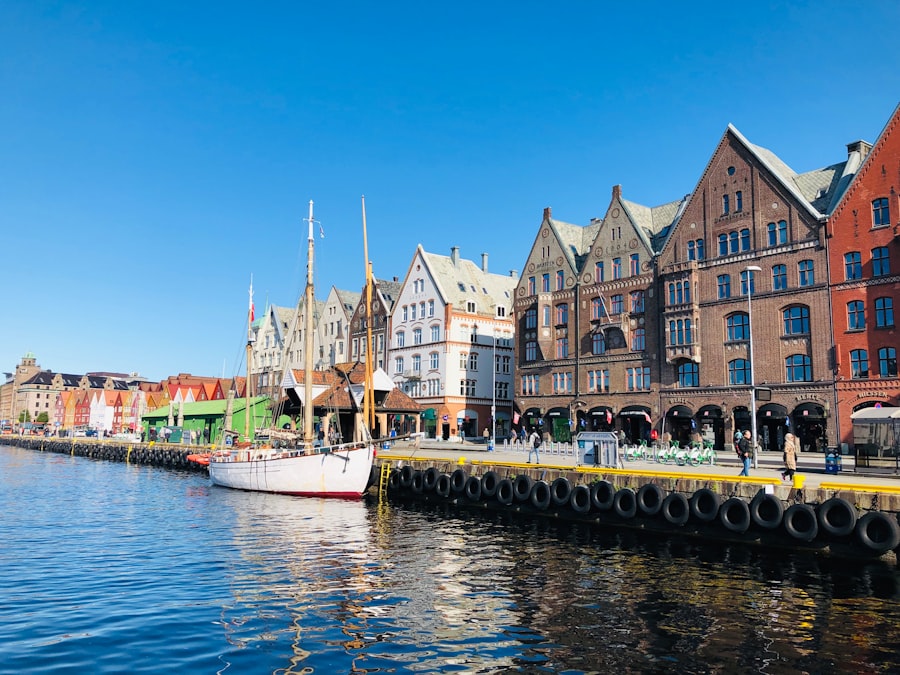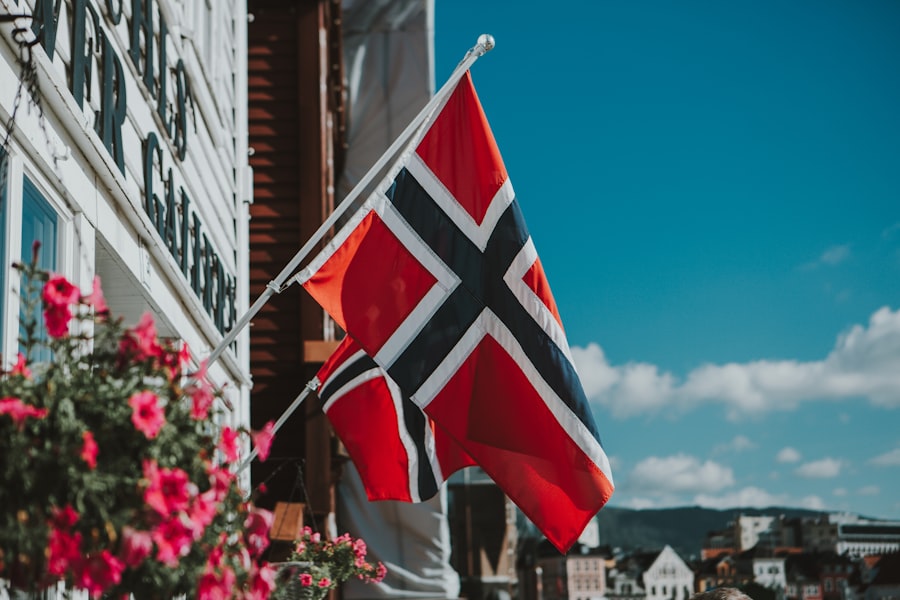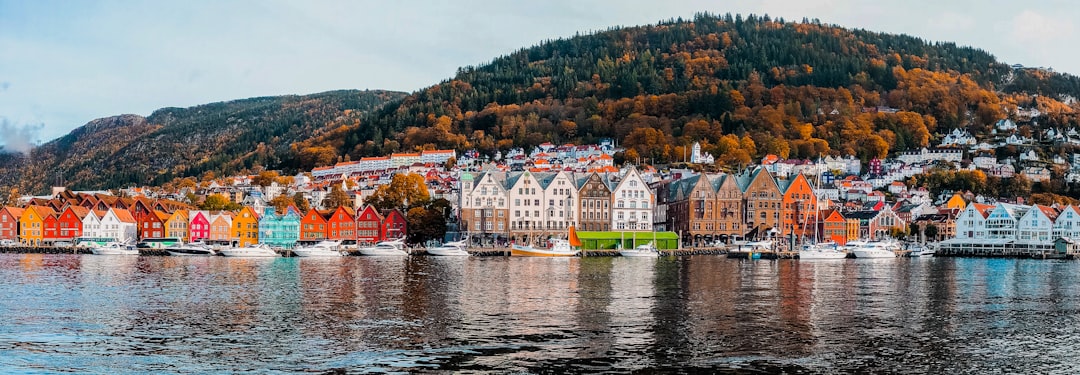Halloween, as it is known today, has a rich and varied history that has evolved over centuries. Its origins can be traced back to the ancient Celtic festival of Samhain, which marked the end of the harvest season and the onset of winter. This festival was celebrated in various forms across Europe, but it was particularly significant in Ireland and Scotland.
As Christianity spread throughout Europe, many pagan traditions were absorbed into Christian practices, leading to the establishment of All Hallows’ Eve on 31st October, the night before All Saints’ Day. In Norway, Halloween’s roots are somewhat different. The country has its own set of traditions and folklore that predate the modern celebration.
Norse mythology features a variety of spirits and supernatural beings, which were often invoked during the darker months of the year. However, Halloween as we know it today did not gain popularity in Norway until the late 20th century. The influence of American culture, particularly through films and television, began to shape how Norwegians viewed this once obscure holiday.
As a result, Halloween has transformed from a minor event into a significant occasion celebrated by many across the country. Your journey to a smooth relocation starts here. Talk one-on-one with a Norway Relocation specialist and turn your plan into a reality.
Summary
- Halloween was not widely celebrated in Norway until the late 1990s, when it began to gain popularity as a result of American influence.
- In Norway, Halloween is primarily celebrated with costume parties, trick-or-treating, and themed events at local venues.
- American culture has heavily influenced Norwegian Halloween traditions, with the adoption of pumpkin carving, haunted houses, and the use of popular American Halloween symbols.
- Traditional Norwegian Halloween foods and treats include marzipan figures, chocolate skulls, and “soul cakes” similar to those found in the UK.
- The rise of Halloween parties and events in Norway has led to an increase in the commercialization of the holiday, with businesses capitalizing on the sale of costumes, decorations, and themed products.
How Halloween is Celebrated in Norway
In contemporary Norway, Halloween is celebrated with a blend of traditional customs and modern practices. The festivities typically begin in late October, with children eagerly anticipating the arrival of Halloween night. On 31st October, children dress up in costumes ranging from spooky ghosts to beloved characters from popular culture.
The tradition of “trick-or-treating” has gained traction in urban areas, where children go door-to-door collecting sweets and treats from neighbours. This practice has become a delightful way for communities to engage with one another, fostering a sense of camaraderie and fun. In addition to trick-or-treating, many families host Halloween-themed parties that feature games, decorations, and themed foods.
These gatherings often include activities such as pumpkin carving, where families create intricate designs on pumpkins to display on their doorsteps. The atmosphere is filled with laughter and excitement as children and adults alike embrace the spirit of Halloween. While some may argue that these celebrations are merely an imitation of American customs, they have taken on a unique Norwegian flavour that reflects the country’s culture and values.
The Influence of American Culture on Norwegian Halloween Traditions

The influence of American culture on Norwegian Halloween traditions cannot be overstated. As globalisation has increased, so too has the exchange of cultural practices between nations. American films, television shows, and social media have played a pivotal role in shaping how Norwegians perceive and celebrate Halloween.
Iconic symbols such as jack-o’-lanterns, witches, and ghosts have become synonymous with the holiday, largely due to their portrayal in popular media. Moreover, the commercialisation of Halloween in the United States has led to an influx of Halloween-themed merchandise in Norway. Shops now stock costumes, decorations, and sweets specifically for the occasion, making it easier for families to participate in the festivities.
This shift has not only made Halloween more accessible but has also contributed to its growing popularity among younger generations who are eager to embrace this vibrant celebration. While some may lament the loss of traditional Norwegian customs in favour of American influences, many others appreciate the opportunity to partake in a global celebration that brings joy and excitement to their communities.
Traditional Norwegian Halloween Foods and Treats
While Halloween is often associated with candy and sweets, traditional Norwegian foods also play a role in the celebrations. One popular treat during this time is “knask eller knep,” which translates to “trick or treat” in English. This phrase is often used by children as they go door-to-door collecting goodies.
In addition to store-bought candies, many families prepare homemade treats such as “kaker” (cakes) and “kjeks” (cookies) decorated with spooky designs. Another traditional food that has gained popularity during Halloween is “grøt,” a rice porridge often served with cinnamon and sugar. This comforting dish is typically enjoyed during the colder months and has become a staple at Halloween gatherings.
Additionally, pumpkin-based dishes have started to emerge as part of the culinary landscape during this time, reflecting the influence of American traditions. Pumpkin soup and roasted pumpkin seeds are now common offerings at Halloween parties, showcasing how Norwegian cuisine is evolving while still honouring its roots.
The Rise of Halloween Parties and Events in Norway
In recent years, there has been a noticeable rise in Halloween parties and events across Norway. From community gatherings to themed nights at local bars and clubs, the holiday has become an opportunity for people to come together and celebrate in a festive atmosphere. Many towns organise public events such as parades or fairs that feature costume contests, games, and live entertainment, drawing large crowds eager to partake in the fun.
Schools have also embraced Halloween as an occasion for celebration. Many educational institutions host themed events where students can dress up and participate in activities that promote creativity and teamwork. These gatherings not only provide a break from the usual routine but also foster a sense of community among students and their families.
As Halloween continues to gain traction in Norway, it is likely that we will see even more innovative events designed to engage people of all ages.
Halloween Decorations and Customs in Norwegian Homes

As Halloween approaches, many Norwegian households begin to adorn their homes with festive decorations that reflect the spirit of the season. Traditional symbols such as pumpkins, ghosts, and witches are commonly used to create an inviting yet spooky atmosphere. Families often carve pumpkins into jack-o’-lanterns, which are then placed on doorsteps or windowsills to welcome trick-or-treaters.
In addition to pumpkins, other decorations may include cobwebs, skeletons, and themed lights that illuminate homes during the dark autumn evenings. Many families take pride in their decorations, often competing with neighbours to create the most impressive displays. This friendly rivalry adds an element of excitement to the holiday as families come together to celebrate creativity and community spirit.
The Commercialization of Halloween in Norway
The commercialisation of Halloween has become increasingly evident in Norway over recent years. Retailers have capitalised on the growing popularity of the holiday by offering an extensive range of costumes, decorations, and themed products designed specifically for Halloween celebrations. This influx of merchandise has made it easier for families to participate in the festivities while also contributing to a burgeoning market for seasonal goods.
However, this commercialisation has sparked debate among some Norwegians who feel that the true essence of Halloween is being overshadowed by consumerism. Critics argue that the focus on purchasing costumes and decorations detracts from the holiday’s original spirit of community engagement and creativity. Despite these concerns, many people continue to embrace the commercial aspects of Halloween as a means of enhancing their celebrations and creating lasting memories with family and friends.
Controversies Surrounding the Adoption of Halloween in Norway
The adoption of Halloween in Norway has not been without its controversies. Some individuals express concern that the holiday promotes values that are inconsistent with traditional Norwegian culture. Critics argue that the emphasis on costumes and trick-or-treating detracts from more meaningful celebrations such as All Saints’ Day or local harvest festivals that have deep-rooted significance within Norwegian society.
Additionally, there are concerns about safety during trick-or-treating events, particularly regarding children wandering through neighbourhoods at night. Parents often worry about their children’s safety while out collecting treats from strangers’ homes. These concerns have led some communities to implement guidelines for trick-or-treating or organise supervised events to ensure a safe environment for children.
Halloween in Norwegian Schools and Communities
Halloween has found its way into schools across Norway as educators recognise its potential for fostering creativity and community spirit among students. Many schools organise themed events where students can dress up in costumes and participate in various activities such as pumpkin carving or arts and crafts projects related to Halloween themes. These school celebrations often extend beyond mere fun; they provide opportunities for students to learn about cultural traditions from around the world while also encouraging teamwork and collaboration among peers.
By incorporating Halloween into school curricula or extracurricular activities, educators can create an engaging learning environment that promotes inclusivity and cultural awareness.
The Impact of Halloween on Norwegian Tourism
As Halloween continues to grow in popularity within Norway, its impact on tourism cannot be overlooked. Many towns have begun hosting special events or festivals centred around Halloween themes, attracting visitors from both within Norway and abroad. These events often feature haunted houses, ghost tours, or themed markets that showcase local crafts and foods.
Tourism boards have recognised this trend and are actively promoting Halloween-related activities as part of their marketing strategies. By highlighting unique experiences tied to the holiday, they aim to draw visitors during what might otherwise be considered an off-peak season for travel. As more tourists flock to Norway for Halloween festivities, local economies stand to benefit from increased spending on accommodations, dining, and entertainment.
The Future of Halloween in Norway: Trends and Predictions
Looking ahead, it is clear that Halloween will continue to evolve within Norwegian society. As younger generations embrace this vibrant celebration influenced by global trends, we can expect further integration of Halloween customs into everyday life. The blending of traditional Norwegian practices with modern elements will likely create a unique cultural tapestry that reflects both local heritage and global influences.
Moreover, as communities become more engaged with Halloween celebrations through events and activities designed for all ages, we may see an increase in collaboration between local businesses and organisations aimed at enhancing these experiences. This could lead to even more innovative ways for people to celebrate together while fostering a sense of belonging within their communities. For those looking to fully immerse themselves in Norwegian culture while navigating these evolving traditions, organisations like the Norway Relocation Group can provide invaluable assistance during this transition period.
They offer support for newcomers seeking guidance on cultural integration while also helping individuals find resources related to language learning or community engagement. As part of this journey into Norwegian culture, enrolling in courses at institutions like NLS Norwegian Language School in Oslo can further enrich one’s experience by providing essential language skills necessary for effective communication within local communities during festive occasions like Halloween. By embracing both language learning opportunities alongside cultural exploration through events such as Halloween celebrations—individuals can truly appreciate all that Norway has to offer while forging meaningful connections along the way.
Register for a Norwegian class at the NLS Norwegian Language School now!

